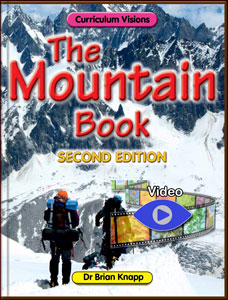Tundra is type of vegetation region of the earth (a biome) where forests cannot grow because of low temperatures in the short growing season. The term tundra means "treeless mountain tract". There are three types of tundra: Arctic tundra, Alpine tundra, and Antarctic tundra.
The plants you find are dwarf shrubs, sedges and grasses, mosses, and lichens. In a mountain area, the boundary between the tundra and the forest is known as the tree line.
The Arctic tundra only occurs where there is permanently frozen ground within a few centimetres of the surface. We don't see this very often, because these parts of the world are largely without people or roads, but they actually cover vast areas of northern Russia and Canada. The polar tundra is home to nomadic reindeer herders.
The land is not only cold, but windy, so only low growing plants such as moss, heathers, and lichen can thrive. The winter is very cold and dark, with the average temperature around −28°C/−18°F. At this time of the year the soil is frozen solid. During the summer the top layer of soil melts, but as the water cannot seep deeper into the soil because lower sown it is still frozen. the water remains, making the ground permanently wet. Surplus water drains into hollows, and this is why the tundra is covered in marshes, lakes, bogs and streams during the warm months. Summer rise to 12°C/54°F, but only for a month or so.
Despite all of this water about, the Arctic tundra is actually a desert with under 25cm/6in of rain a year, of which most falls in summer as rain. This means that the tundra is not covered in deep snow in winter, as you might imagine, and so there is no snow 'blanket' to keep the intense cold of the air from the soil. This is why the soil freezes solid.
In these conditions, dead branches and other plant material does not decompose and so builds up as a kind of fuel, so that, from time to time, fires occur over the tundra. These fires burn off the surface and create ash, which is a natural fertilizer. In this way, they nourishment in the dead plants is returned to the roots of the growing ones. Although the fires are rare, perhaps every century or two, they are important.
Few species can live in these extreme conditions. Only 1,700 species of plants and only 48 species of land mammals live here permanently. However, millions of birds migrate there each summer to feed on life in the marshes, which consists mainly of insects like mosquitoes that breed in the bogs. The best-known animals in the Arctic tundra are caribou/reindeer, musk ox, Arctic hare, Arctic fox, snowy owl and lemming. there are no amphibians such as frogs or lizards.
The Southern hemisphere has little tundra, mainly on some islands in the southern oceans. Most of Antarctica is too cold and dry to support vegetation.
Mountain, or Alpine, tundra is different from Arctic tundra in that Alpine tundra does not have permafrost, and Alpine soils are better drained than Arctic soils. It is simply too cold and windy for trees. The main plants are dwarf shrubs that live close to the ground. There is often a spectacular bloom of flowering plants in the spring, as they flower quickly. Some even flower while they are still pushing out through the melting snow.






